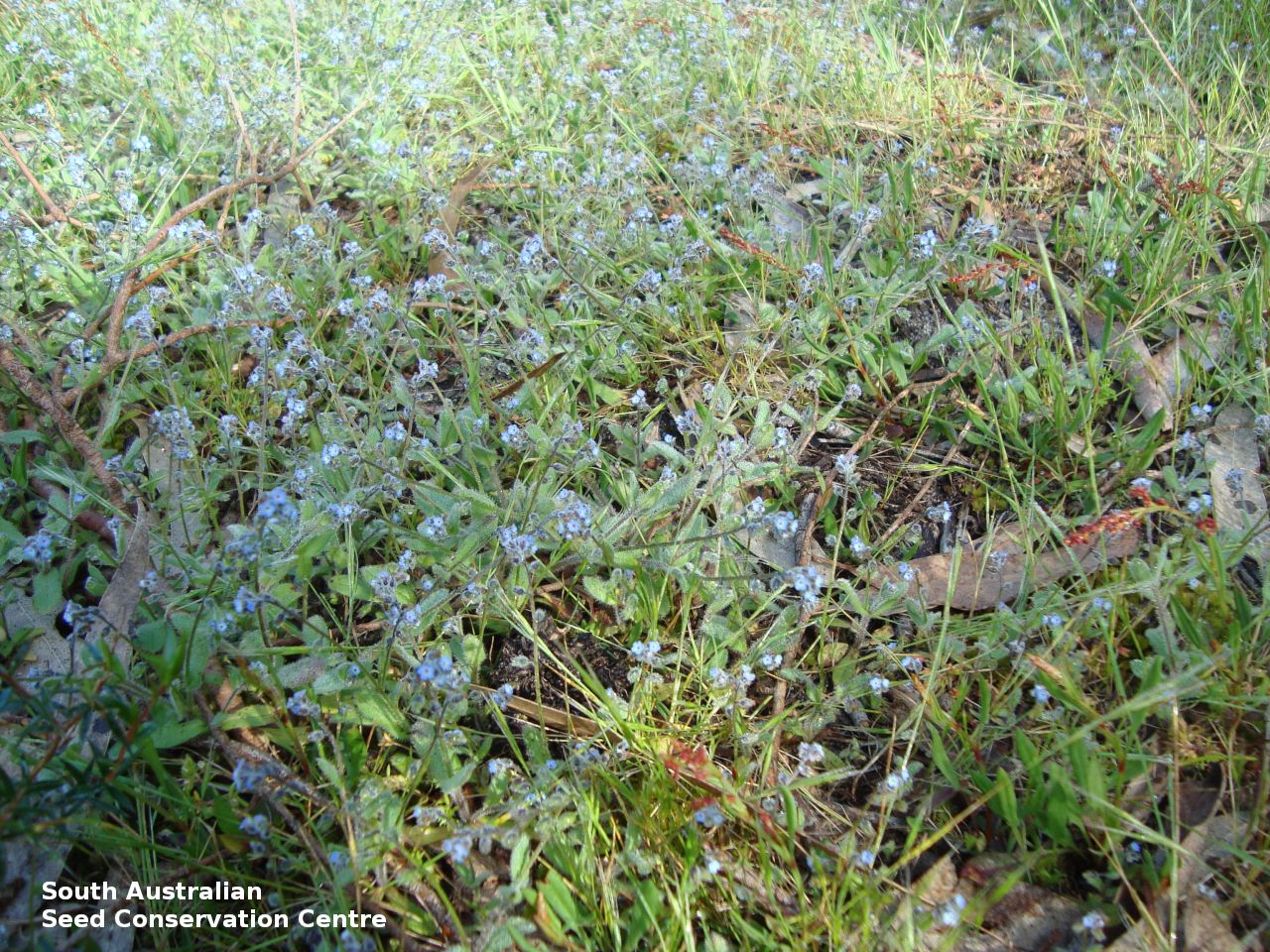
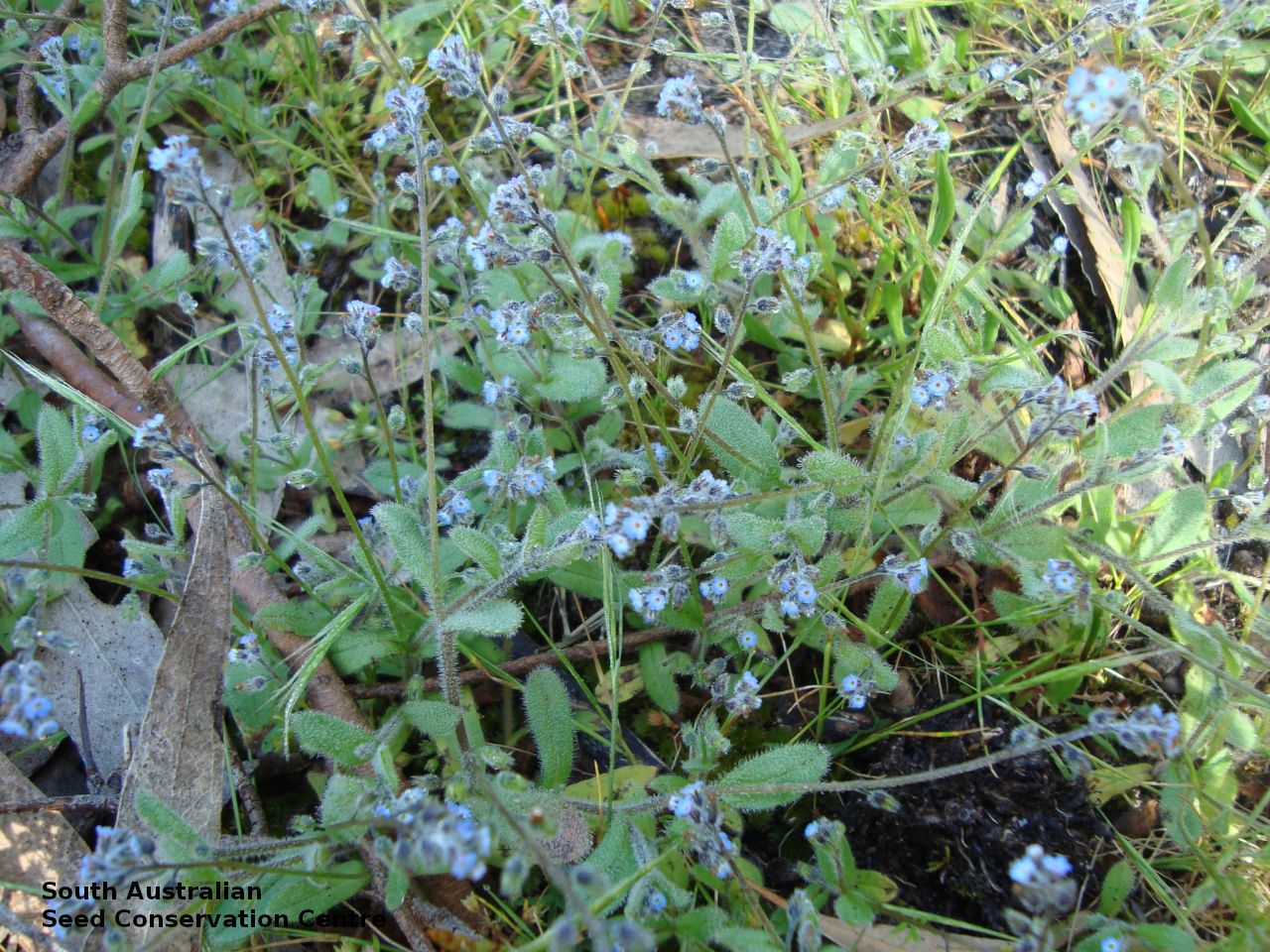
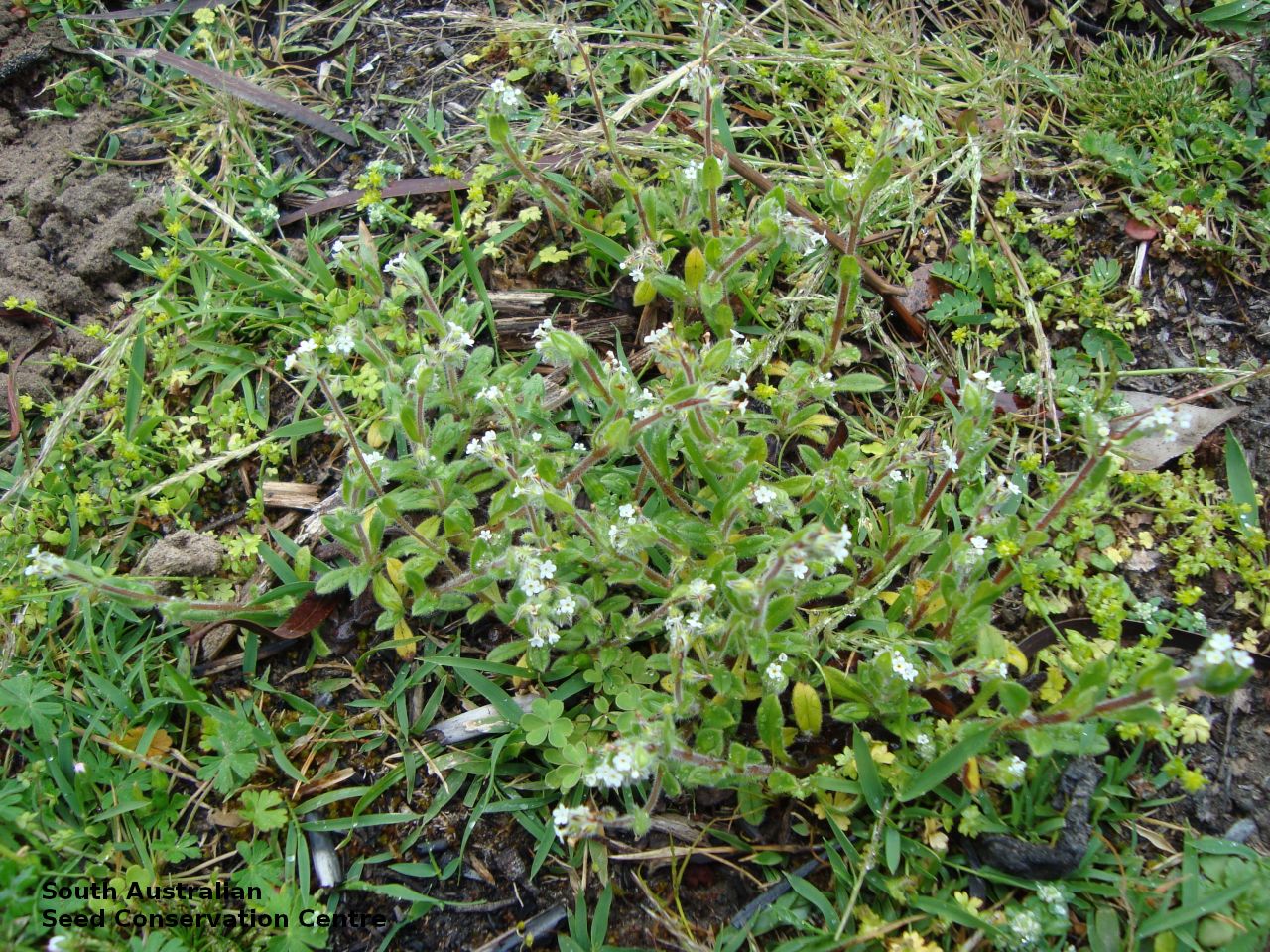
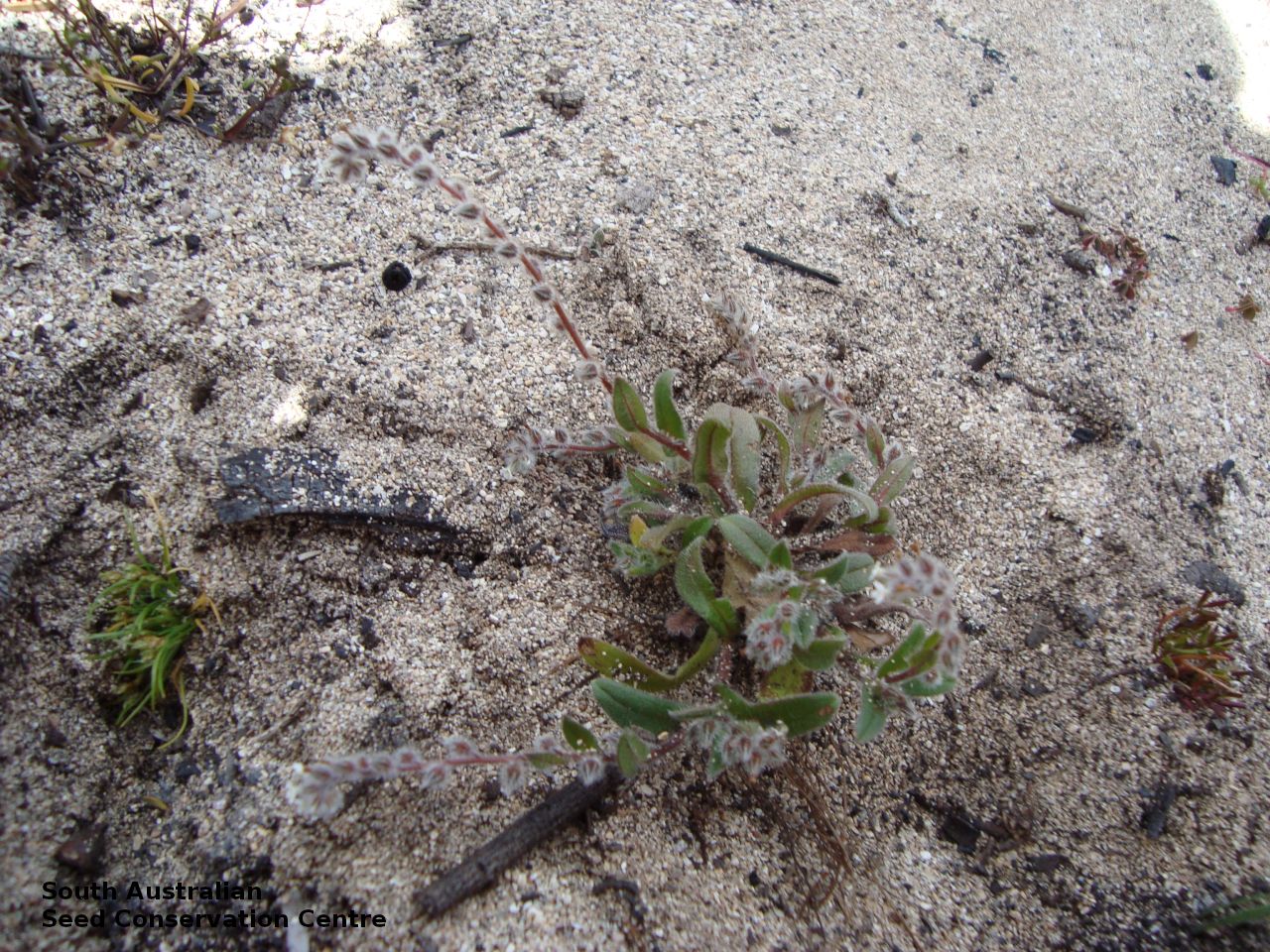
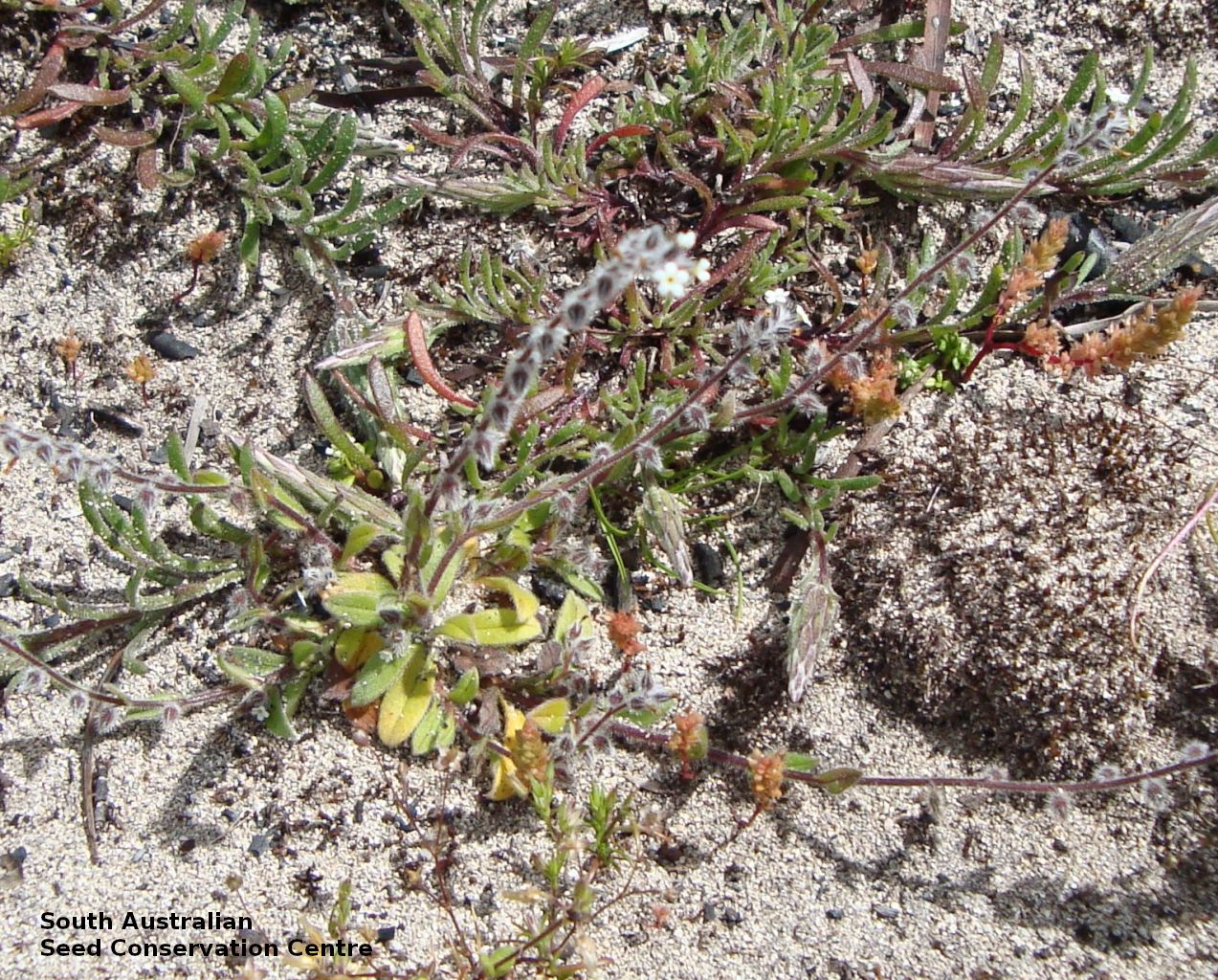

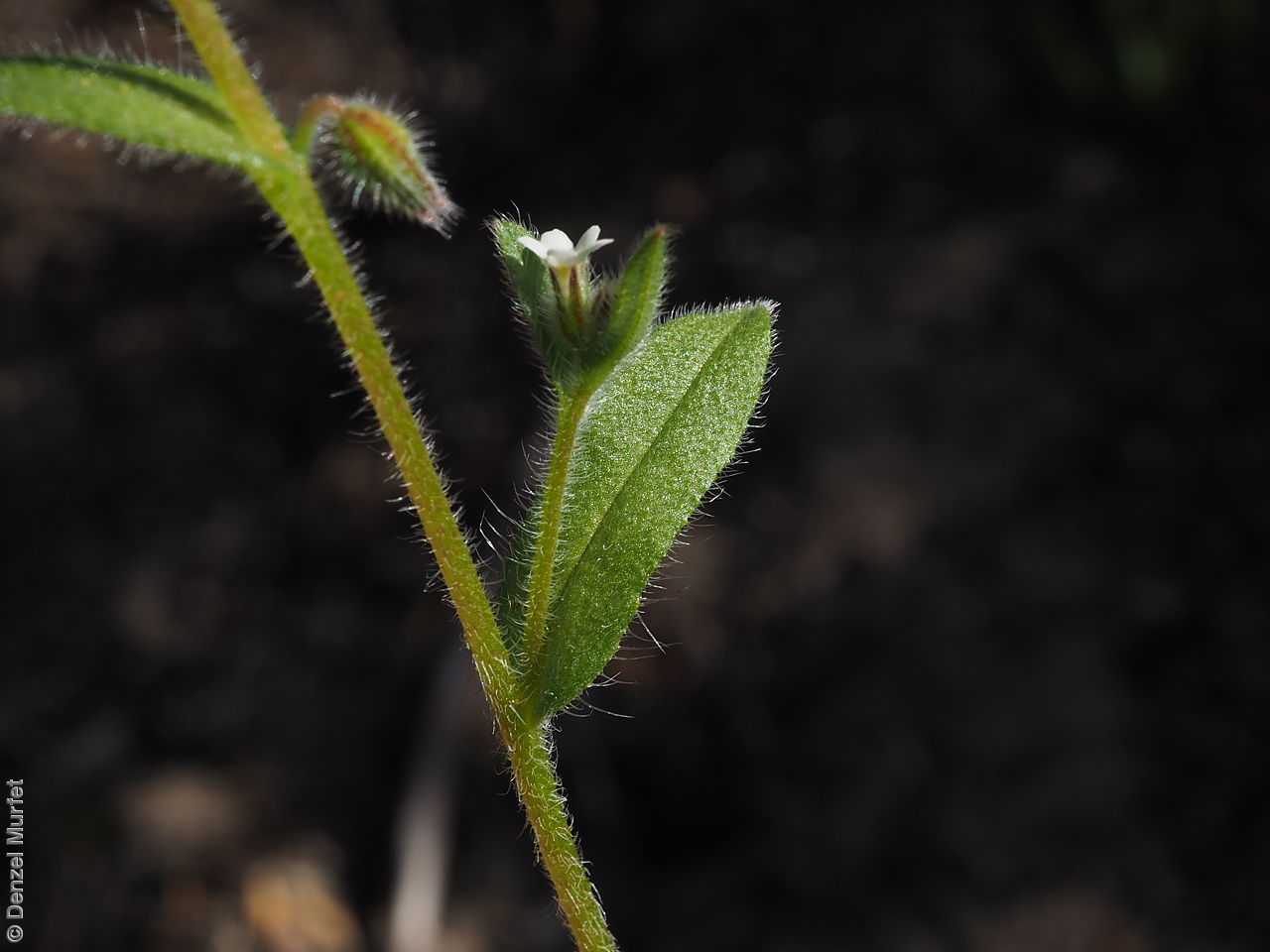
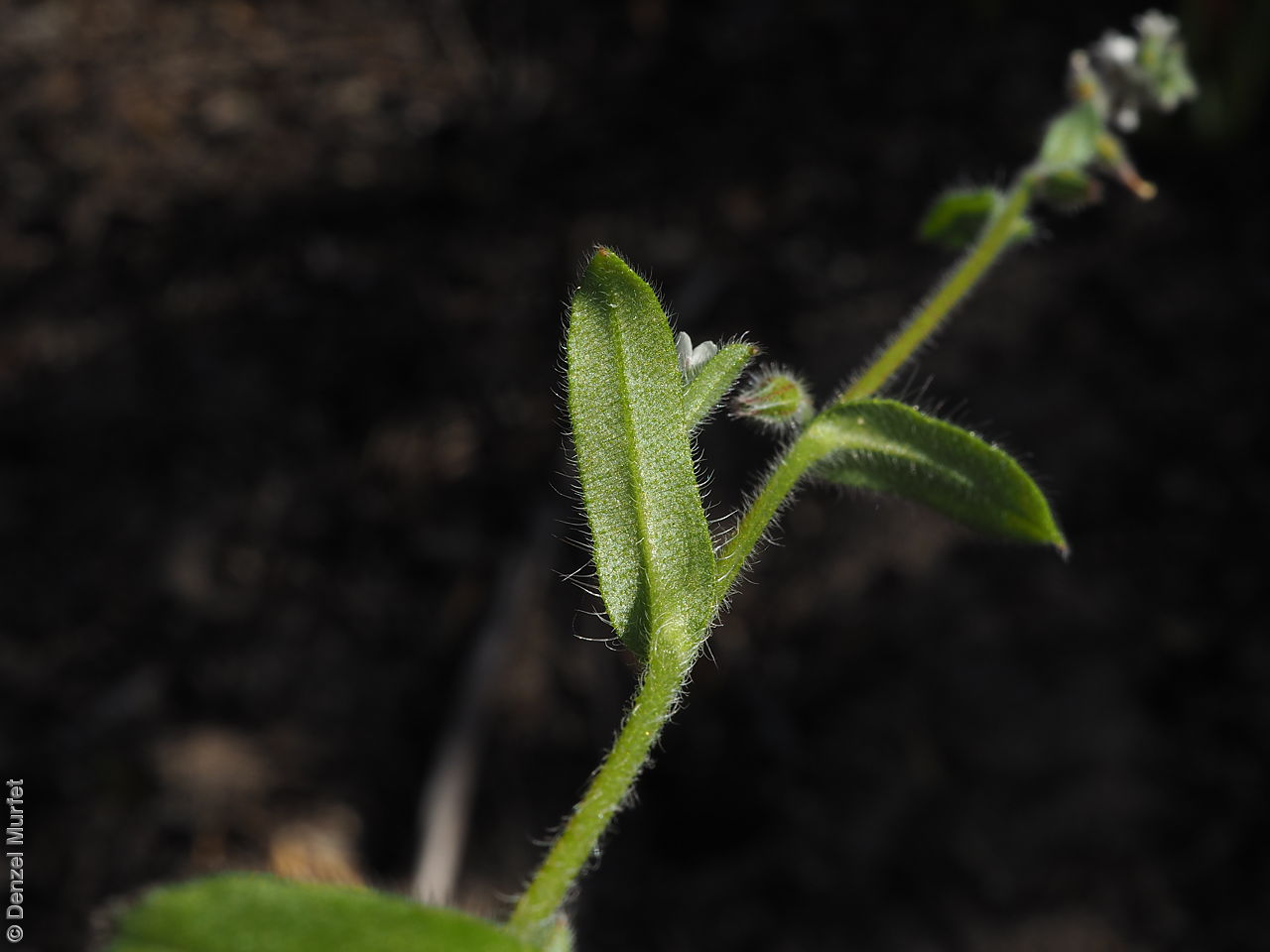
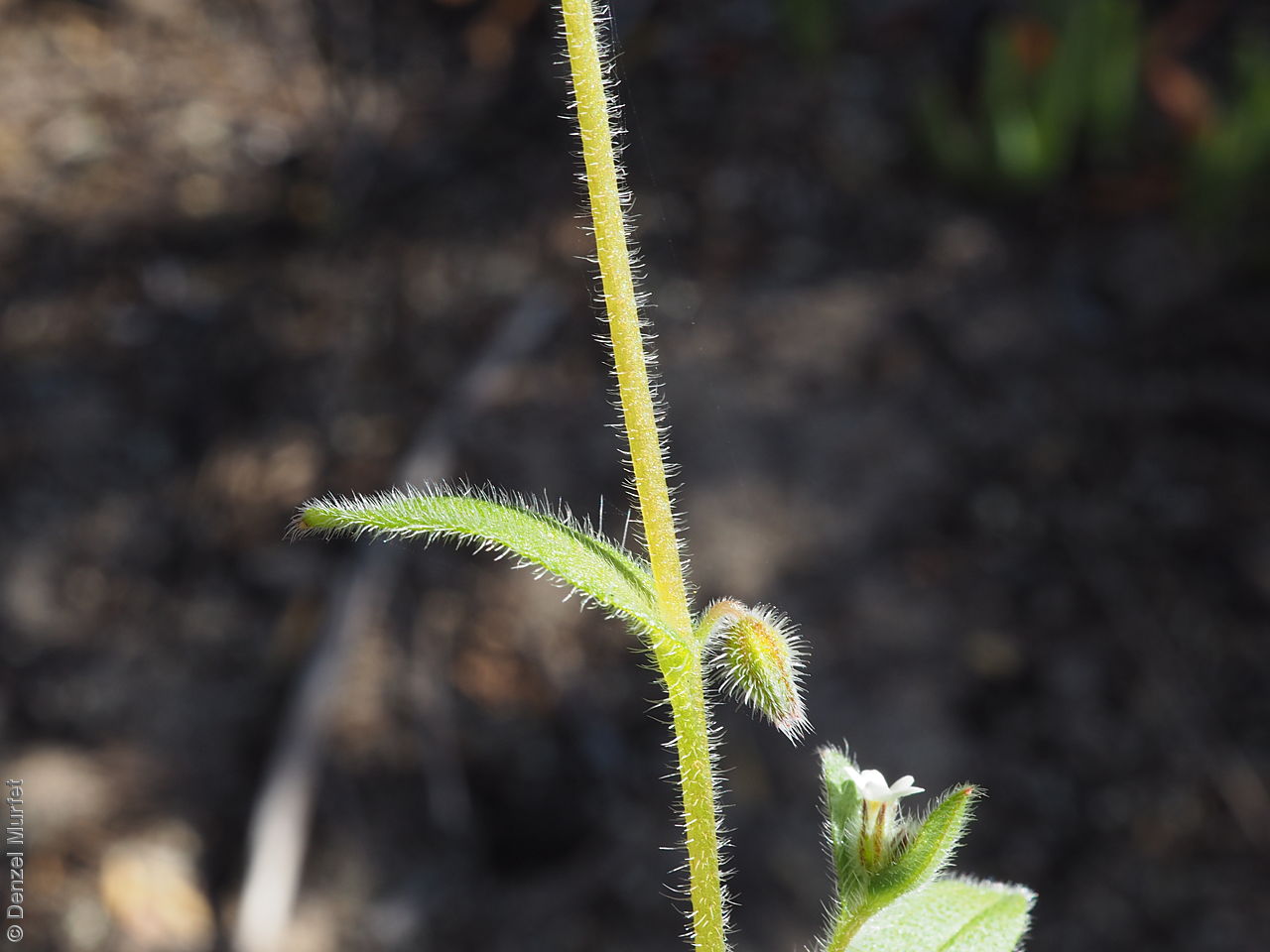

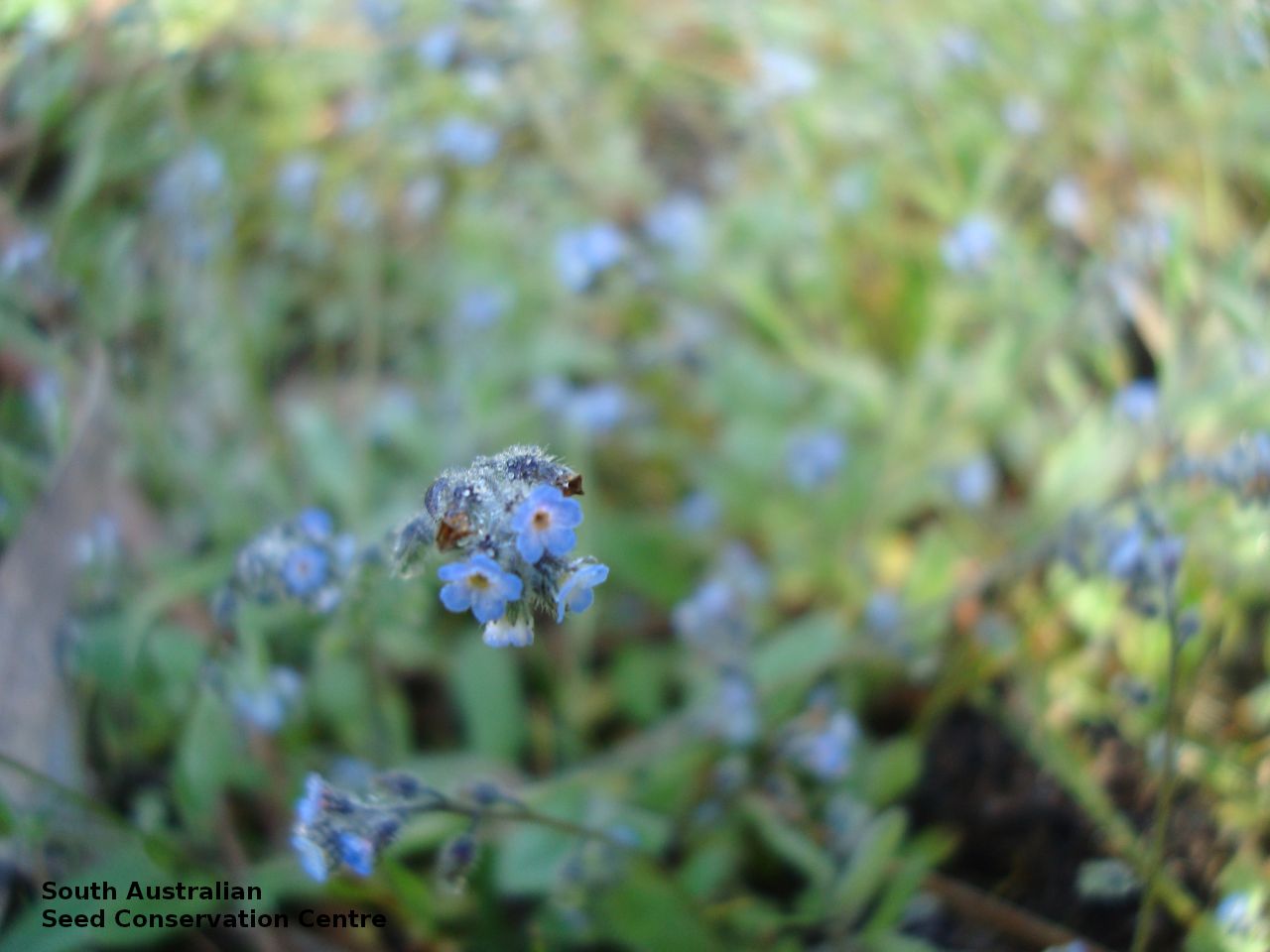
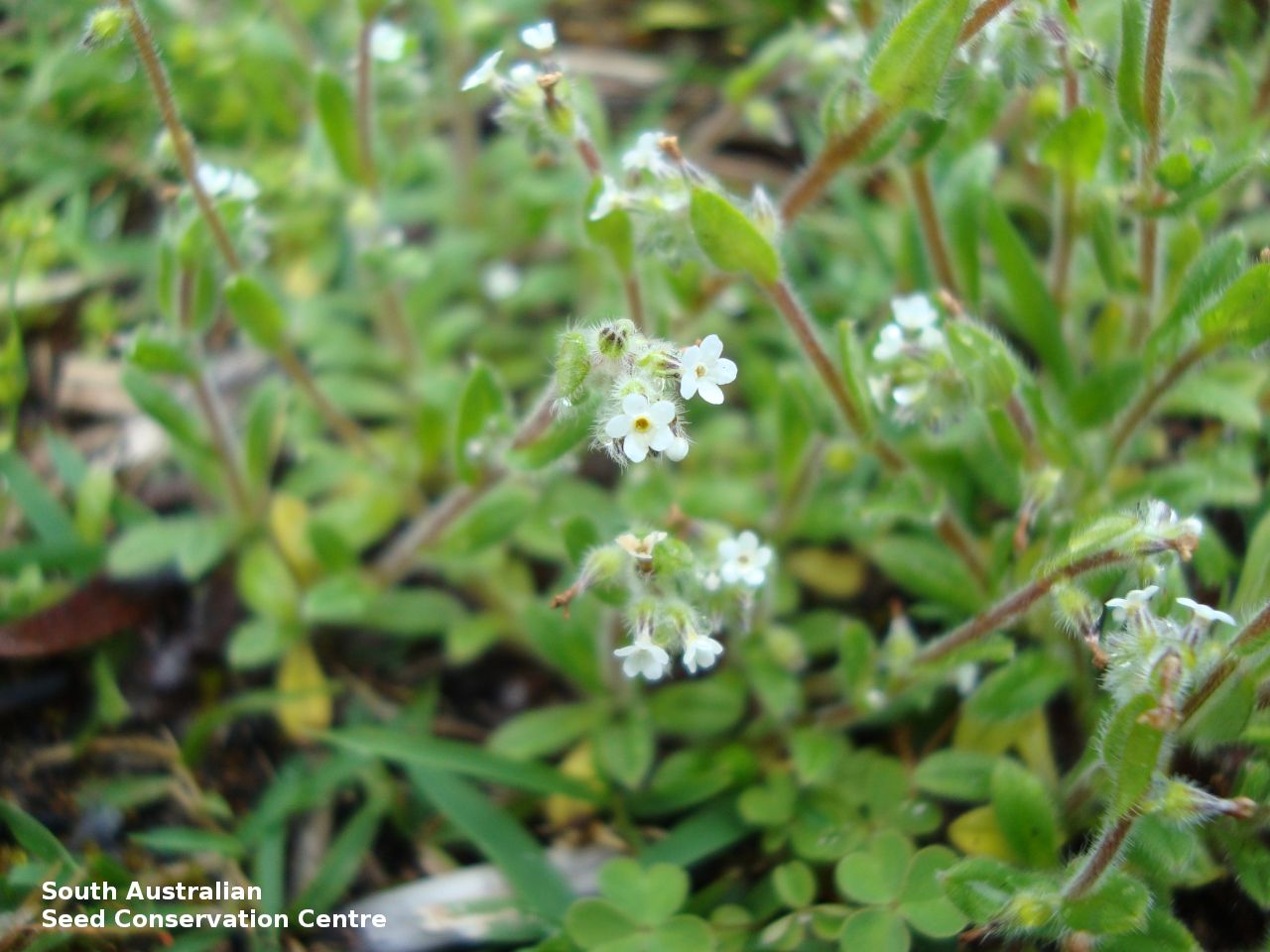
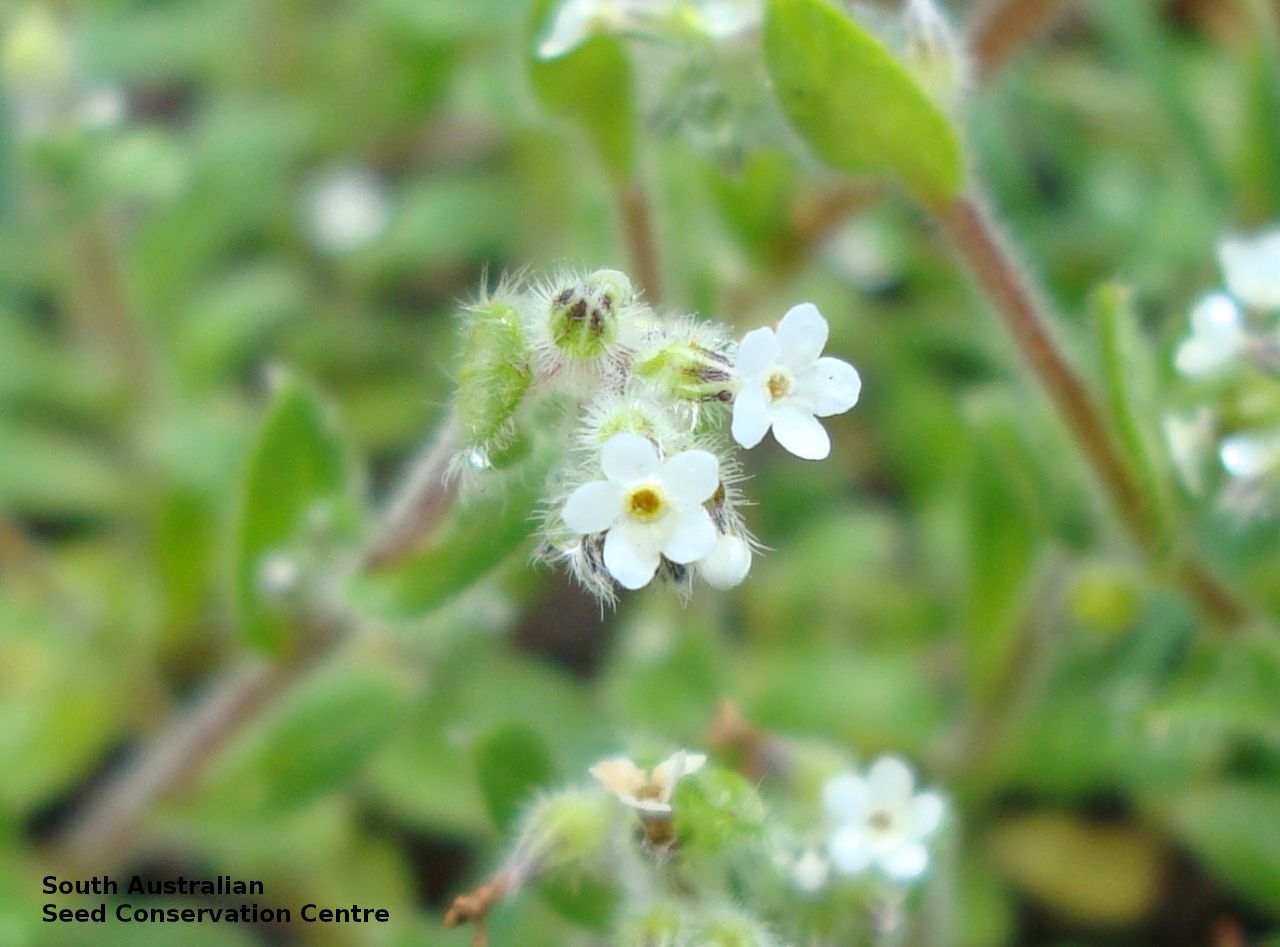
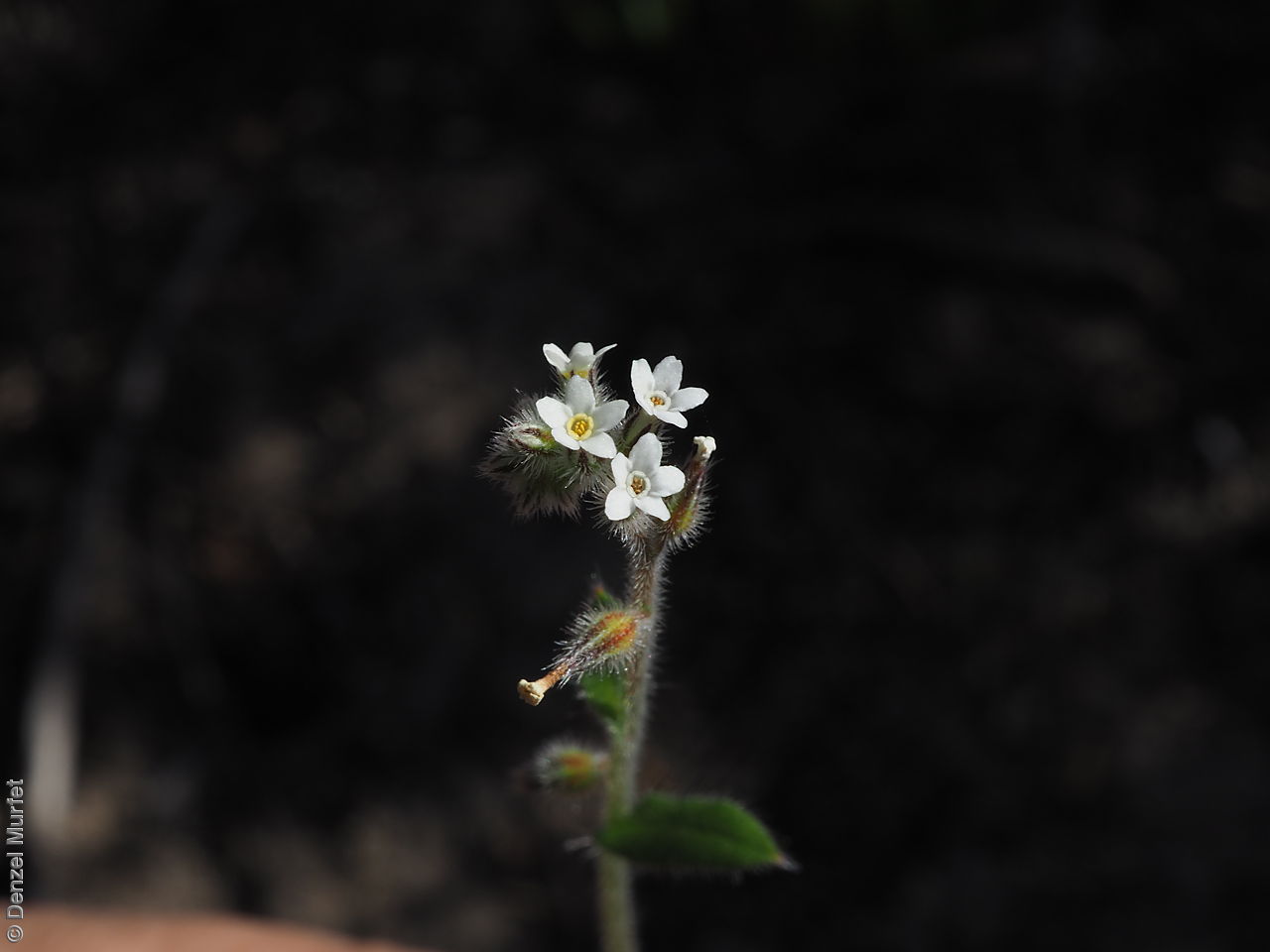
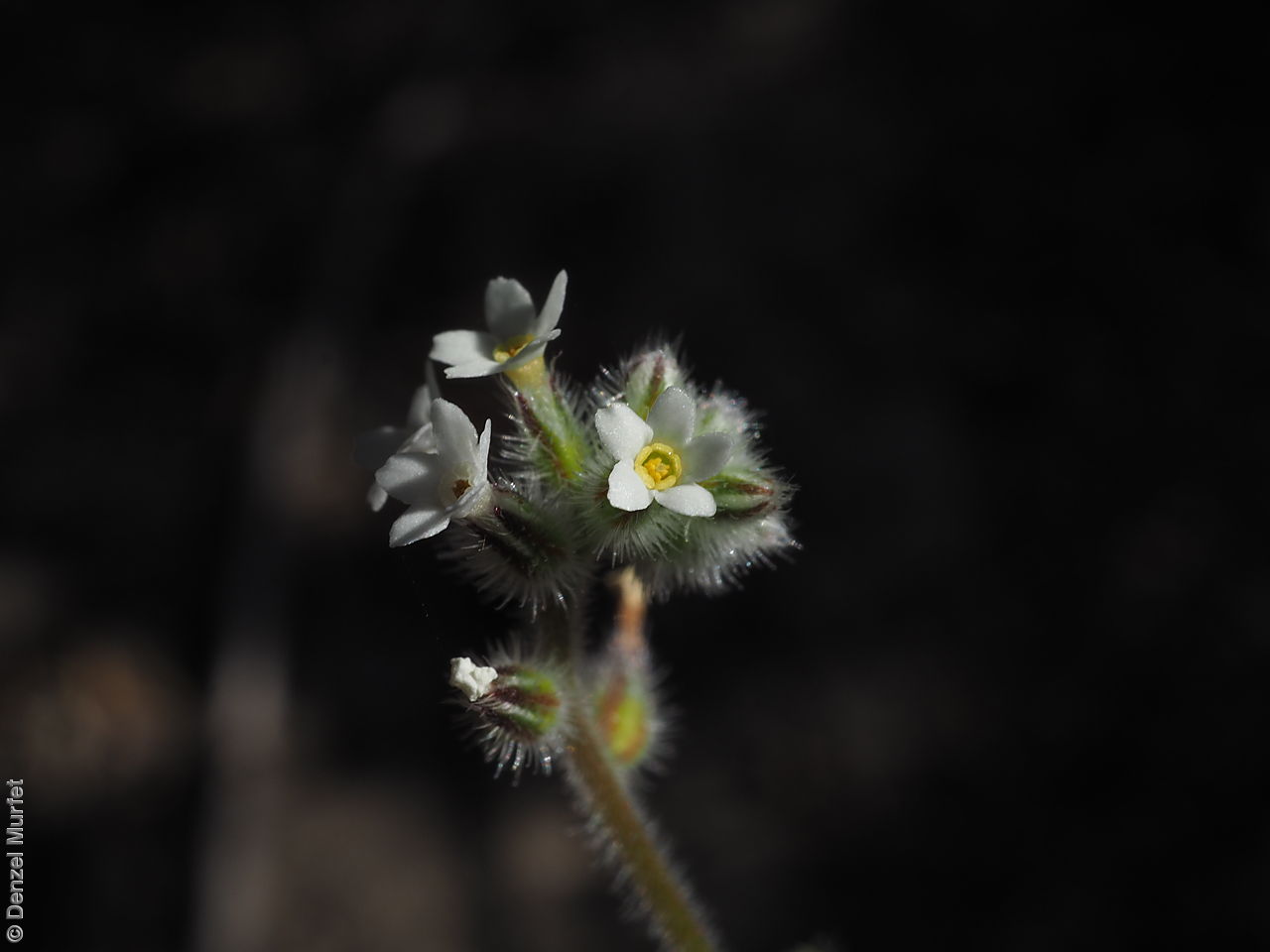

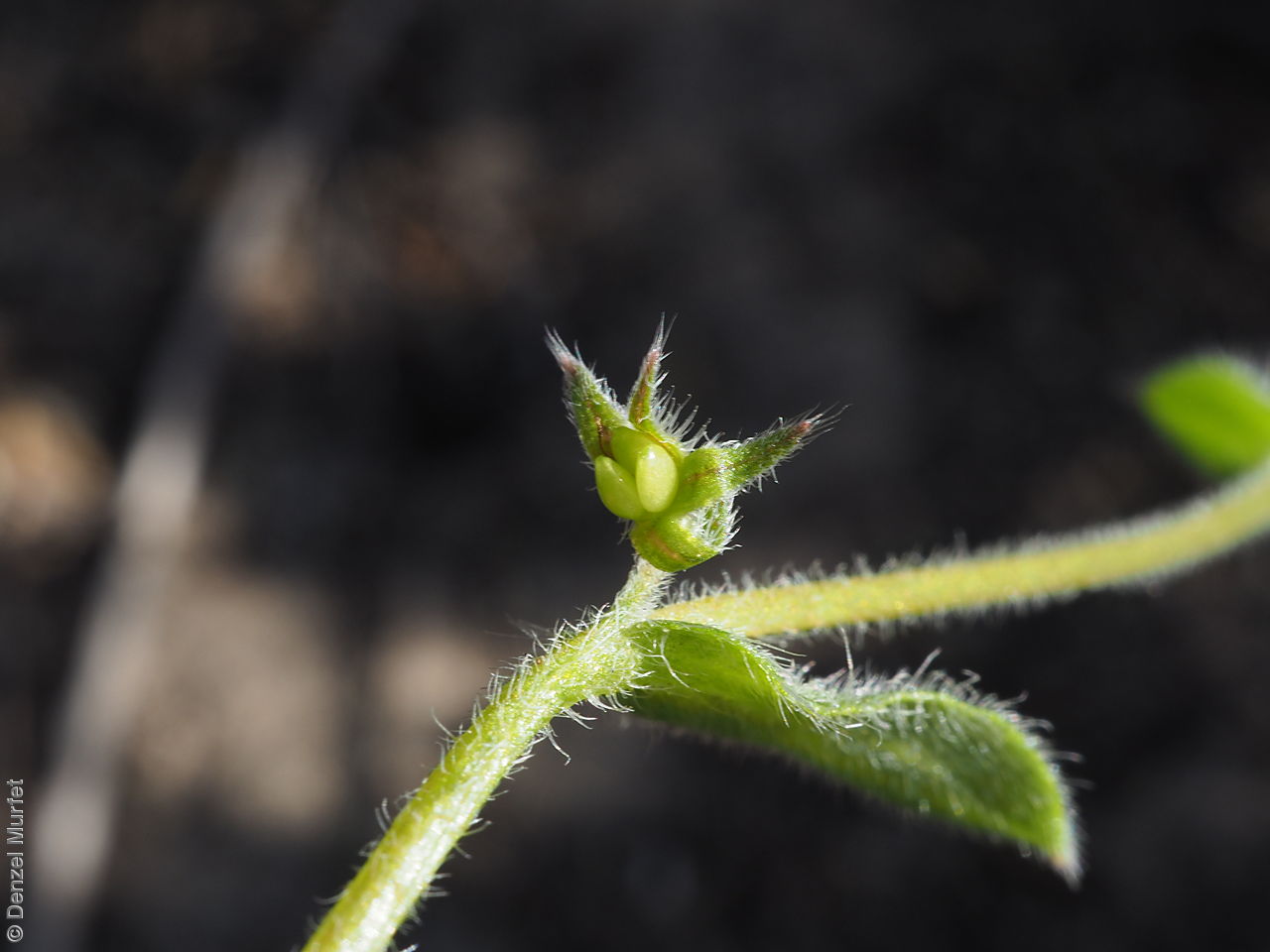

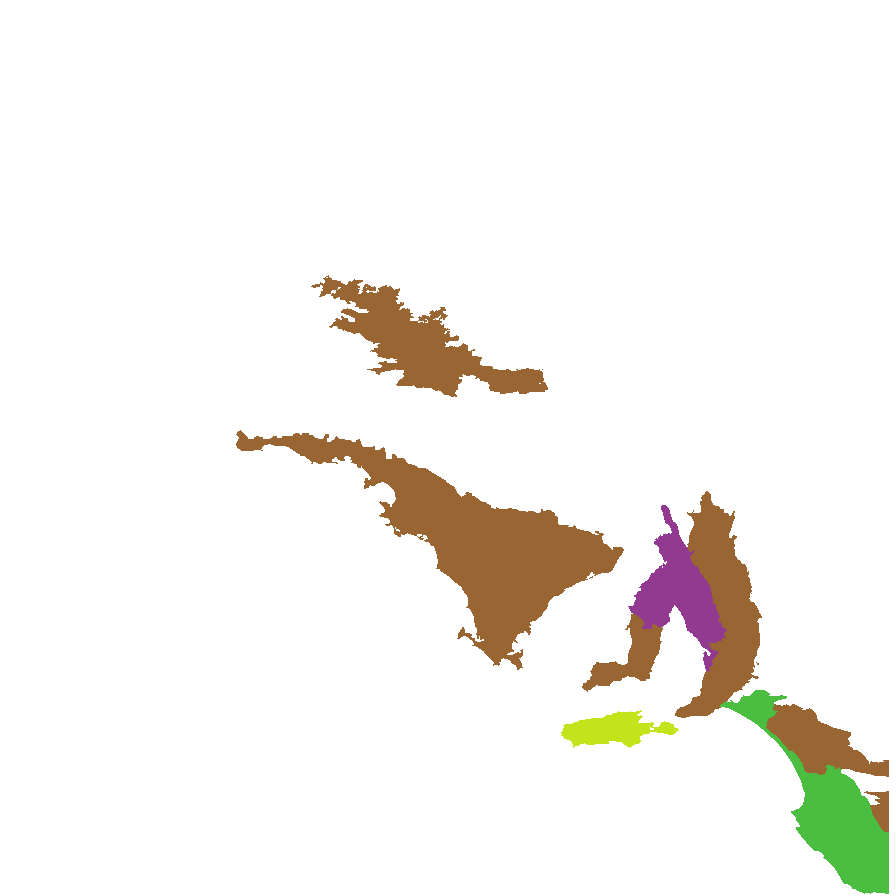
Botanical art
Etymology
Myosotis, from the Greco-Latin name of the European forget-me-not (from 'muos?tis', from 'mus', meaning mouse and 'ous,' meaning ear), which is based on the resemblance of the leaves to ears of a mouse or a rat. Australis, means of or from the south, referring to the distribution of the species in the Southern Hemisphere.
Distribution and status
Found in the southern part of South Australia growing in a wide range of habitats. Also found in Western Australia, New South Wales, Victoria and Tasmania. Native. Common in South Australia. Rare in Western Australia. Common in the other States.
Herbarium regions: Gairdner-Torrens, Eyre Peninsula, Northern Lofty, Murray, Yorke Peninsula, Southern Lofty, Kangaroo Island, South Eastern, Green Adelaide
NRM regions: Adelaide and Mount Lofty Ranges, Eyre Peninsula, Kangaroo Island, Northern and Yorke, South Australian Arid Lands, South Australian Murray-Darling Basin, South East
AVH map: SA distribution map (external link)
Plant description
Annual or perennial herb to 40 cm high; erect or ascending with branches covered in dense spreading hairs. Leaves densely hairy; apex rounded, margins flat; rosette leaves oblanceolate, to 10 cm long and 16 mm wide;, stem leaves lanceolate. Inflorescence a long spike within axils, with small tubular white, yellowish or blue flowers. Flowering between August and November. Fruits are brown ovoid capsule, covered in long white hairs. Seed embryo type is spatulate.
Seed collection and propagation
Collect seeds between October and January. Collect mature capsules that are drying off, turning brown and contain dark, hard seeds inside. Can collect individual fruit cluster or break off whole heads. Place the capsules in a tray and leave to dry for one to two weeks, then rub the fruits gently by hand to dislodge the seeds. Use a sieve to separate the unwanted material. Store the seeds with a desiccant such as dried silica beads or dry rice, in an air tight container in a cool and dry place.